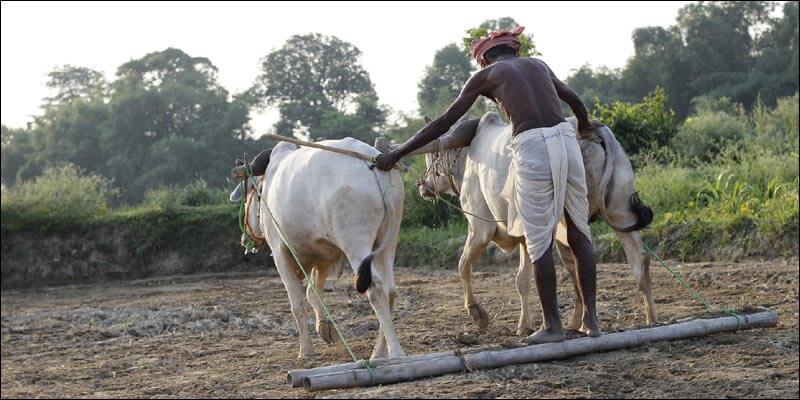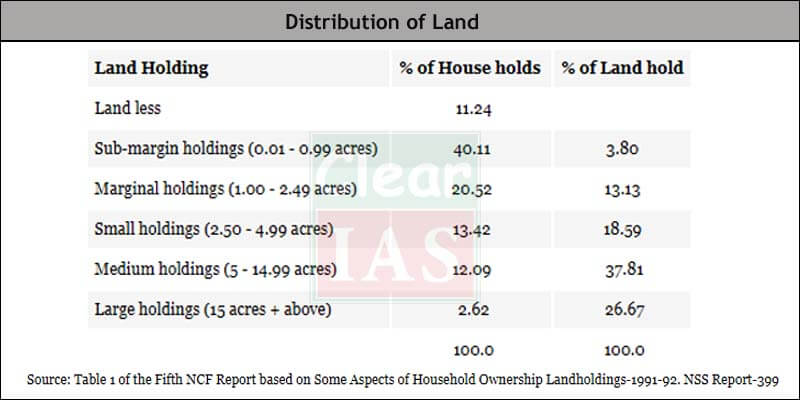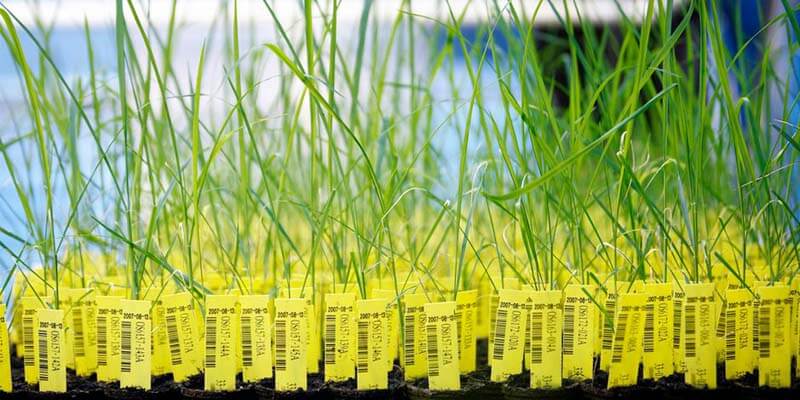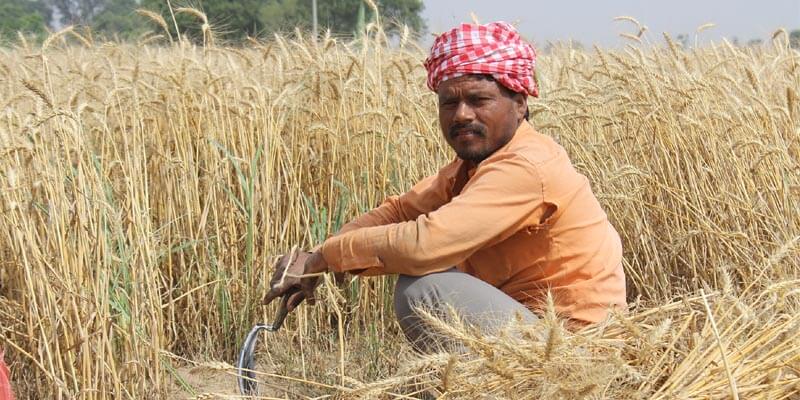
Composition of the National Commission on Farmers
The composition of the reconstituted National Commission on Farmers is as under
- Chairman – M.S. Swaminathan
- Full-time Members – Ram Badan Singh, Shri Y.C. Nanda
- Part-time Members – R.L. Pitale, Shri Jagadish Pradhan, Chanda Nimbkar (yet to join), Atul Kumar Anjan
- Member Secretary – Atul Sinha
Reports of the National Commission on Farmers

The five reports of the National Commission on Farmers contain suggestions to achieve the goal of “faster and more inclusive growth” as envisaged in the Approach to 11th Five Year Plan.
The fifth report is the most important among the reports submitted by the National Commission on Farmers. It focused on causes of farmer’s distresses and the rise in farmers’ suicides. Based on the recommendations submitted in 2006, a ‘National Draft Policy for Farmers‘ was placed before the Parliament in October 2007. (Reference – Kisanayog)
The National Commission on Farmers’ findings and recommendations mainly focused on issues of access to resources and social security entitlements. It contains suggestions for inclusive growth of farmers and agriculture sector in India. It is aimed at working out a system for food and nutrition security, sustainability in the farming system, enhancing quality and cost competitiveness of farm commodities and also to recommend measures for credit and other marketing related steps. However, most of the recommendations in the reports of National Commission on Farmers are not yet implemented.
Recommendations of the National Commission on Farmers
Asset reforms
1. Land reform:
Land reforms are necessary to address the basic issue of access to land for both crops and livestock. Land holdings inequality is reflected in land ownership. In 1991-92, the share of the bottom half of the rural households in the total land ownership was only 3% and the top 10% was as high as 54%.

- Reforms in tenancy laws, land leasing, distribution of ceiling surplus land and wasteland, providing adequate access to common property and wasteland resources, and the consolidation of holdings.
- Prevent diversion of prime agricultural land and forest to the corporate sector for non-agricultural purposes.
- Wherever feasible, landless labour households should be provided with at least 1 acre per household, which will give them space for home gardens and animal rearing.
- Establish a National Land Use Advisory Service, which would have the capacity to link land use decisions with ecological meteorological and marketing factors on a location and season-specific basis.
2. Water:
Water is a public good and social resource and not private property. Priority should be given to evolving just and equitable mechanisms to give access to water and to include local people in the management of water resources. The following steps are needed for supply augmentation and demand management of water resource:
- Rainwater harvesting and aquifer recharge should be mandatory and farmers must be provided with financial assistance to invest in the replenishment of their renewable resource. This is the imperative need for conservation farming.
- Demand management through improved irrigation practices, including sprinkler and drip irrigation, should receive priority attention.
- A water literacy movement should be launched and regulations should be developed for the sustainable use of groundwater.
- In water-scarce areas, the land use system should place emphasis on the cultivation of high value – low water requiring crops, such as pulses and oilseeds.
- A Pani Panchayat in every village can help in getting the available water distributed on an equitable basis.
- Water Users’ Associations may be encouraged to gain expertise in maximizing the benefits of the available water. The National Rainfed Area Authority could help in promoting scientific water harvesting, sustainable and equitable use and the introduction of efficient methods of water use.
- In drought-prone areas, a Drought Code may be introduced which details the action needed to minimize the impact of an adverse monsoon and maximize the benefits of a good season. Similarly, in areas prone to heavy rainfall, a Flood Code may be introduced.
3. Livestock:
Livestock, including poultry, is the second major land-based livelihood, contributing 26% of the agricultural GDP in 2004-05. It is clear that livestock and livelihoods are very intimately related in our country and that crop-livestock integrated farming is the pathway to farmers’ well-being.
- An urgent need for establishing Livestock Feed and Fodder Corporations at the State Level for ensuring availability of quality fodder and feed.
- A National Livestock Development Council may be established to give integrated attention to all aspects of this important sector, such as breeding policy, feed and fodder, healthcare through Para-veterinary professionals, marketing, value addition, biomass utilization (skin, bones and blood) and efficient use of animal energy, for example, through improved bullock carts.
- Poultry rearing should be recognized as an agricultural activity and appropriate support should be provided to backyard poultry farmers to establish Small Holders’ Poultry Estates.
4. Fisheries:
Both coastal and inland fisheries provide employment and livelihoods to millions of families. There is considerable scope for improving the income of fisher families on an environmentally sustainable basis by introducing Integrated Coastal Zone Management and scientific fish rearing, harvesting and processing.
- “Fish for All Training and Capacity Building Centres” which can impart training to fisher families in all aspects of the capture/culture–consumption chain.
- Quality literacy to safeguard the harvested fish from Salmonella and other infections capable of producing mycotoxins.
- Inland aquaculture, including the culture of ornamental fish and air-breathing fish, for additional income by providing necessary space in ponds and reservoirs.
- Artificial coral reefs to compensate for the loss of natural coral reefs to revive the fish catch.
- The coastal communities can also be enabled to raise bio-shields comprising mangroves, Casuarina, salicornia, atriplex and other halophytic plants, to safeguard the lives and livelihoods of coastal fisher and farm families in the event of cyclonic storms and seawater inundation, as for example like the one caused by the tsunami of December 26, 2004.
5. Bioresources:
Bioresources refer to the abundant wealth of flora and fauna including soil micro-flora and micro-fauna.
- Preserving traditional rights of access to biodiversity, which include access to non-timber forest products including medicinal plants, gums and resins, oil-yielding plants and beneficial micro-organisms.
- Conserving, enhancing and improving crops and farm animals as well as fish stocks through breeding.
- Genetic engineers working in public good institutions should perform the role of pre-breeding, i.e., development of novel genetic combinations for important economic traits, such as resistance to biotic and abiotic stresses. They should then work with farmers in participatory breeding programs so that genetic efficiency and genetic diversity can be integrated in an effective manner.
- Genome Clubs can be organized in rural schools and colleges for imparting an understanding of the importance of genetic resources conservation.
- A genetic and legal literacy movement must be launched in areas rich in agro-biodiversities such as the North East, Western and the Eastern Ghats and the Arid Zone.
Reforms in support services

1. Science and technology:
- The research strategy should be a pro-nature and pro-small farmer.
- A National Biotechnology Regulatory Authority should be set up for safe and responsible use of recombinant DNA technology, with farmers’ representatives on it.
- Intellectual Property Rights (IPR) policies should make provision for compulsory licensing of rights in the cases of research products and processes of value to resource-poor farming families.
2. Agro- metrology:
- There should be a National Land Use Advisory Service that gives proactive advice to help farm families plan their sowing based on anticipated meteorological and marketing factor. An integrated internet-FM or HAM radio service would be very helpful to fishermen on the high seas.
3. Credit and Insurance:
- There is a need for both credit and insurance literacy in villages. Gyan Chaupals can help in this task.
- Expand the outreach of the formal credit system to reach the really poor and needy.
- Establish an Agriculture Risk Fund to provide relief to farmers in the aftermath of successive natural calamities.
- Kisan Credit Cards should be issued to women speedily with joint pattas to house/agricultural land as collateral.
- Drought-prone areas should have a 4-5 year repayment cycle for crop loans, taking into account the management of risk.
Farmers of the future
The following are some of the methods that small and marginal farmers could consider for gaining in efficiency and economy:
- Cooperative Farming and Service Cooperatives: Cooperative farming will be ideal for small and marginal farmers since the cooperative can provide centralized services like tractors and other farm equipment as well as threshing and drying machines, to support small-scale decentralized production. This will bring down the cost of production and enhance the quality of products and thereby of income.
- Group Farming by Self-help Groups: promote the SHGs at the production end of the farming enterprise by encouraging groups to lease farmland.
- Small Holders’ Estates: The formation of Small Holders’ Estates, for example in cotton, horticulture, medicinal plants, poultry and aquaculture will help promote group cooperation among farmers living in a village or watershed or the command area of an irrigation project.
- Contract Farming: Symbiotic contracts which confer benefits to both producers and purchasers, will be ideal for ensuring assured and remunerative marketing opportunities. A Code of Conduct for Contract Farming will have to be developed for major groups of farm commodities such as vegetables, fruits, flowers, medicinal plants, tuber crops, pulses, oilseeds, sugarcane, cereals and cotton.
- Farmers’ Companies: Small farmers and SHGs should be associated with such companies as stakeholders and not just as shareholders.
Attracting Youth
- Youth will be attracted to take to farming as a profession only if farming becomes economically rewarding and intellectually stimulating.
- Educated youth should be helped through a form of Venture Capital Fund, low-interest loans and allotment of wastelands for setting up agri-clinics and production-cum-processing centres to undertake outsourcing jobs both from within and outside the country, enabling India to emerge as a major agricultural outsourcing hub.
Public policies for sustainable livelihoods
The following policies recommended by the National Commission on Farmers will the ensure well-being and livelihood security of all included under the category of “farmers”:
- A National Land Use Advisory Service should be immediately established and linked to State and Block Level Land Use Advisory Services on a hub and spokesmodel.
- The scope of the MSP programme should be expanded to cover all crops of importance to food and income security for small farmers.
- A Market Price Stabilization Fund should be established jointly by Central and State Governments and financial institutions to protect farmers during periods of violent fluctuations in prices. This fund has been set up in 2014-15.
- An Agriculture Risk Fund should be set up to insulate farmers from risks arising from recurrent droughts and other weather aberrations.
- A Food Guarantee Act should be formulated and enacted. Farmers, who are also the largest consumer group, will produce more if there are greater consumption and consequently greater demand for farm produce and products.
- Farm families should also be protected from becoming victims of HIV/AIDS and tuberculosis (TB). Anti-retroviral drugs should be made available in villages free of cost.
- There is a need for a Rural Non-Farm Livelihood Initiative (RNFLI) for rural areas. The RNFLI could have as its core the Khadi Village Industries Commission (KVIC) and the restructured and strengthened Small Farmers’ Agri-business Consortium (SFAC) and bring all rural non-farm employment programmes together, in order to generate convergence and synergy
among them. - An Indian Trade Organisation (ITO) should be established to help the Government to operate a Livelihood Security Box and link global policies with local action in a manner beneficial to farmers.
- Article 243 G of the 11th Schedule of the Constitution (73rd Amendment) Act, 1992 entrusts Panchayats with responsibility for agriculture including agricultural extension. They will have to be empowered with the needed information, training and tools for discharging this responsibility.
“Jai Kisan”

Mahatma Gandhi preferred to be known as a farmer while signing the Visitor’s Book of the National Dairy Research Institute at Bangalore in 1927. Let us prove worthy of his trust that India will care for its farmers.
Read: New Schemes for Farmers
Article by: Arun Kumar






This is in connection with the article National Commission on Farmers— Recommendations.
I am interested in knowing which of the above mentioned recommendations have been acted upon and which are not. Are there any reasons for not implementing any of these recommendations.
Regards
Sharad Ranade
Dear Team,
You publish very nice and informative content. Could you please also add a date when a particular article is published or updated? This is to ensure that we are not reading outdated information.
Thank you for such wonderful help to students.